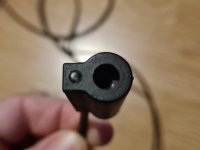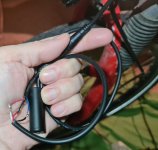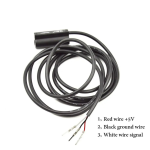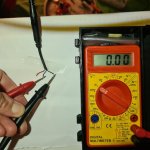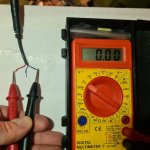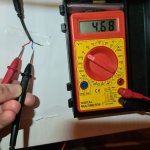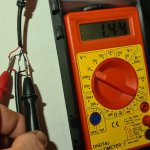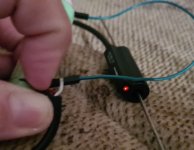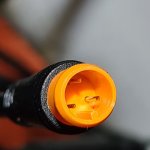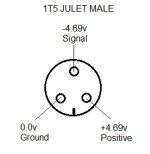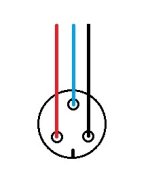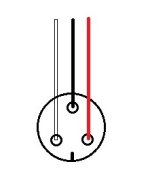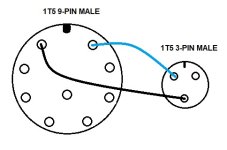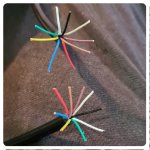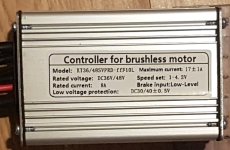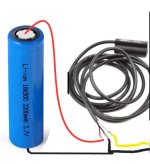Hi. This is my second brake sensors bought because I thought that first maybe won't work.
I upgraded to KT controller. 48v battery. More about this upgraded here.
The way which sensor working is that activate when you hang it to one side (where arrow show). The ball touch some conntact inside and red light must apear.
I found that 3 wires from both side have 6 combinations, right? So I tried and soldered them 18 times (all combinations x 3), with different connectors, and not working. Even didn't got a red led light!
But, the biggest mistery is next:
Test sensor on 1 lithium battery on 3.80v show me red light.
But, what the hell I can't got red light when 2 wires connected on 3pin julet connector from BUS cable ??? There is a 4.6 volts from that connector!!
If 2 wires of sensor works on battery 3.80v, must work on wires from BUS. I checked many combinations with 2 wires and not got red light! How is that possible?
Also other strange thing is, when connect 2 wires from sensor and two from BUS, turn main bike battery, and check voltage, and it gives me only 1.4volts! Is that must be like that? That is maybe reason why not got red light, because when you connect sensor, it looks like eating all power.
But this sensor is made for 5-24v.
Connection from julet connectors is good, and my old sensor (with magnet) works fine.
I cut and shorten sensor wires, not help.


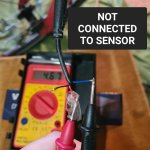
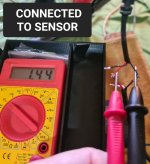
I upgraded to KT controller. 48v battery. More about this upgraded here.
The way which sensor working is that activate when you hang it to one side (where arrow show). The ball touch some conntact inside and red light must apear.
I found that 3 wires from both side have 6 combinations, right? So I tried and soldered them 18 times (all combinations x 3), with different connectors, and not working. Even didn't got a red led light!
But, the biggest mistery is next:
Test sensor on 1 lithium battery on 3.80v show me red light.
But, what the hell I can't got red light when 2 wires connected on 3pin julet connector from BUS cable ??? There is a 4.6 volts from that connector!!
If 2 wires of sensor works on battery 3.80v, must work on wires from BUS. I checked many combinations with 2 wires and not got red light! How is that possible?
Also other strange thing is, when connect 2 wires from sensor and two from BUS, turn main bike battery, and check voltage, and it gives me only 1.4volts! Is that must be like that? That is maybe reason why not got red light, because when you connect sensor, it looks like eating all power.
But this sensor is made for 5-24v.
Connection from julet connectors is good, and my old sensor (with magnet) works fine.
I cut and shorten sensor wires, not help.




Attachments
Last edited:


